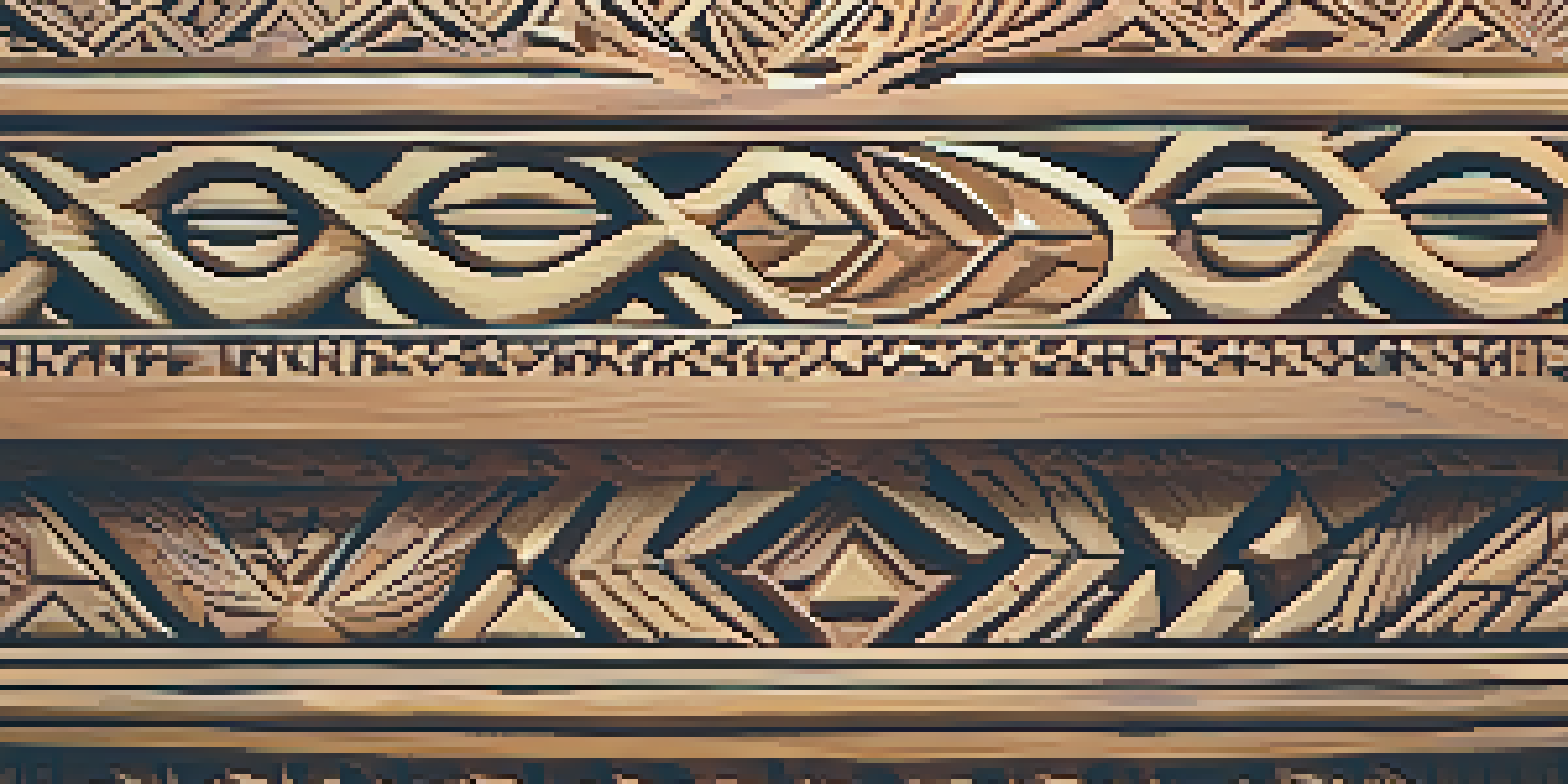Folk Art Carving Patterns: Cultural Influences Explained

Understanding Folk Art Carving: A Brief Overview
Folk art carving is a vibrant expression of culture and tradition, often reflecting the values and beliefs of a community. These intricate designs can be found in various forms, from wooden sculptures to decorative home items. Carving patterns are not just artistic choices; they tell stories and preserve history through generations. By understanding the basics of folk art carving, we can appreciate the rich tapestry of cultural influences it embodies.
Historical Roots of Folk Art Carving Patterns
Historically, folk art carving has deep roots in various cultures around the world. In many cases, these patterns emerged as a response to the environment, available materials, and social practices. For instance, Native American carvings often feature motifs inspired by nature and spiritual beliefs, while Scandinavian woodwork reflects a blend of functionality and aesthetic appeal. Each culture’s historical context plays a significant role in shaping its unique carving styles.
Cultural Significance of Carving
Folk art carving reflects the values, beliefs, and stories of communities, serving as a vital expression of cultural identity.
Cultural Symbols and Their Significance
Cultural symbols are integral to folk art carving, often representing deeper meanings and values. For example, many African carvings include symbols that signify community, ancestry, and spirituality. These symbols not only decorate the pieces but also serve as a means of storytelling, connecting the carver to their heritage. Understanding these symbols enriches our appreciation of the art form and highlights its role in cultural identity.
Regional Influences in Folk Art Carving
Different regions across the globe contribute distinct characteristics to folk art carving patterns. In Mexico, for instance, vibrant colors and intricate designs reflect the country's rich history and indigenous influences. Meanwhile, Eastern European carvings are often characterized by geometric patterns and motifs that celebrate rural life and traditions. These regional styles showcase how local culture and environment shape artistic expression.
Regional Styles Shape Art Forms
Distinct regional influences contribute unique characteristics to folk art carving, showcasing how local culture and environment shape artistic expression.
The Role of Religion in Folk Art Carving
Religion has played a pivotal role in shaping folk art carving patterns throughout history. Many carvings depict religious figures, symbols, and narratives, serving as a means of worship and spiritual expression. For example, Christian iconography is prevalent in the wood carvings of medieval Europe, while Hindu deities are often intricately carved in South Asian art. These religious influences not only enhance the beauty of the pieces but also connect communities to their spiritual beliefs.
Modern Adaptations of Traditional Folk Art Carving
As society evolves, so too does folk art carving, leading to fascinating modern adaptations. Contemporary artists often blend traditional techniques with modern themes, creating unique pieces that resonate with today’s audiences. This fusion can be seen in the incorporation of new materials or innovative designs while maintaining the essence of cultural storytelling. Such adaptations not only keep the art form alive but also make it relevant in a rapidly changing world.
Modern Adaptations Keep Traditions Alive
Contemporary artists blend traditional techniques with modern themes, ensuring that folk art carving remains relevant in a changing world.
Preserving Folk Art Carving Traditions
Preserving folk art carving traditions is essential for maintaining cultural heritage. Many organizations and artisans work tirelessly to pass down techniques and stories to future generations. Workshops, exhibitions, and educational programs play a vital role in fostering appreciation for these art forms. By supporting these efforts, we contribute to the preservation of not just art, but the cultural narratives that define communities.
Conclusion: The Lasting Impact of Folk Art Carving Patterns
Folk art carving patterns are more than just decorative elements; they are vital expressions of cultural identity. The intricate designs, rich histories, and powerful symbols encapsulate the spirit of communities worldwide. As we explore and appreciate these artworks, we gain insights into the diverse cultural influences that shape them. Ultimately, understanding folk art carving fosters a deeper connection to our shared human experience.